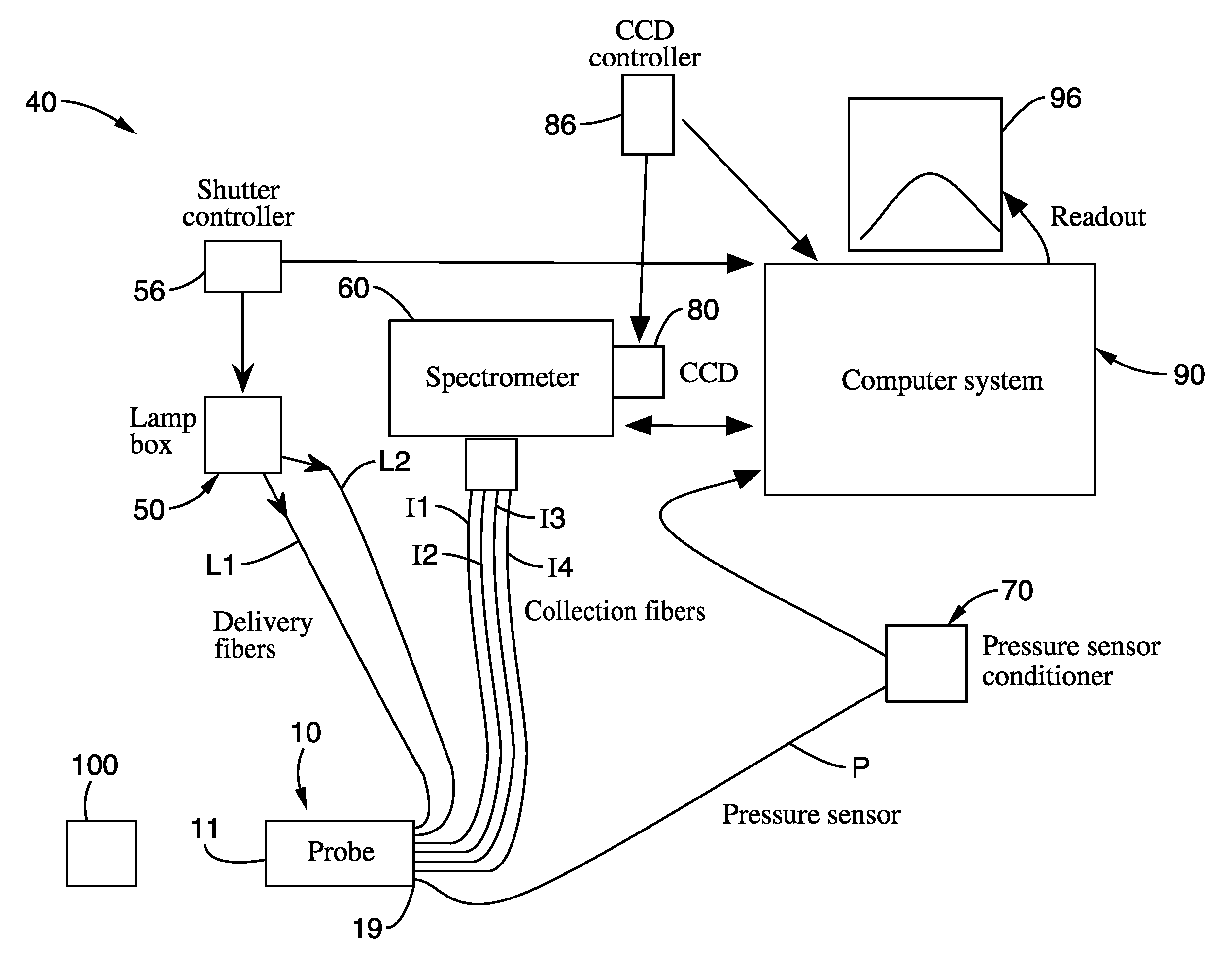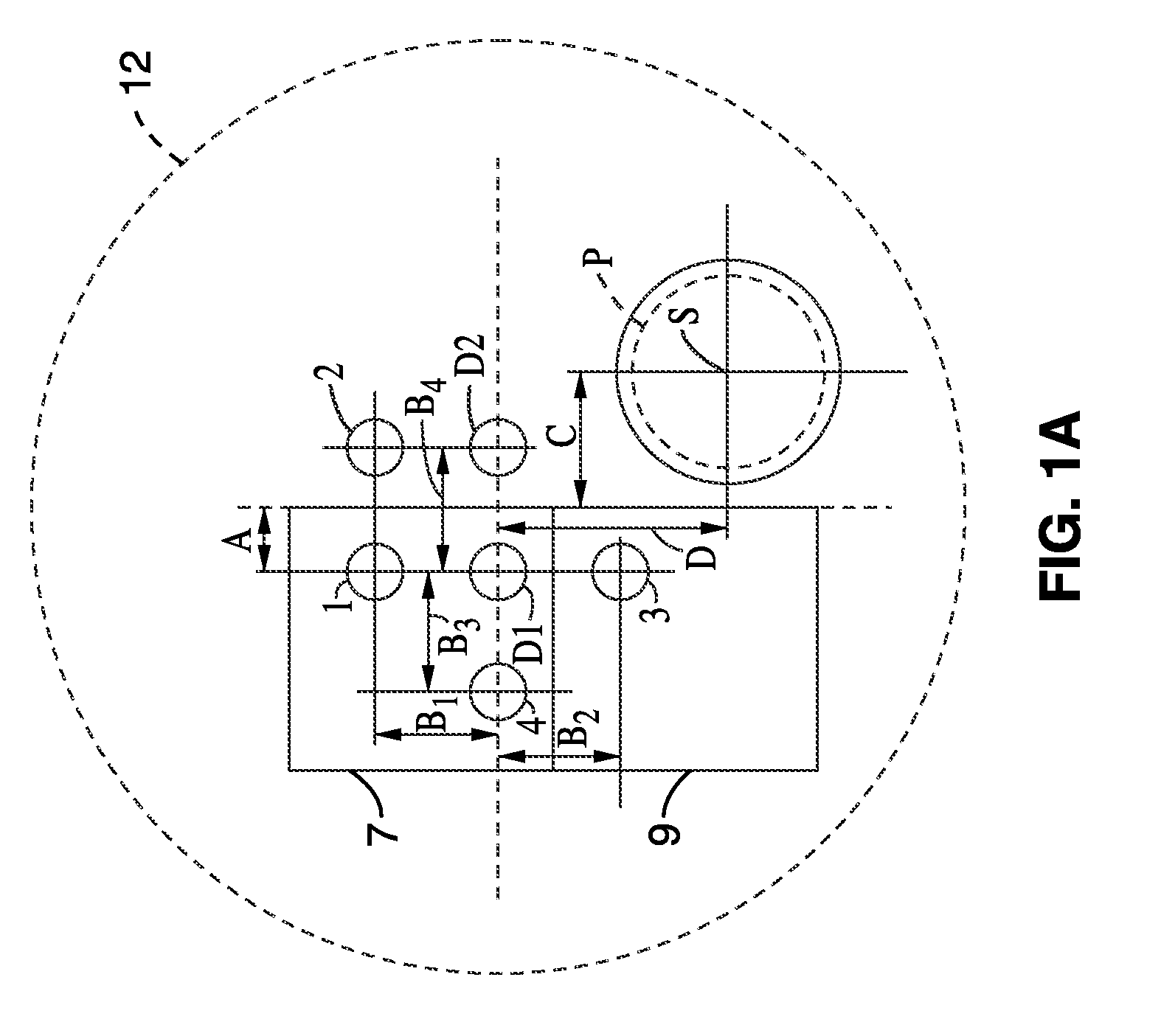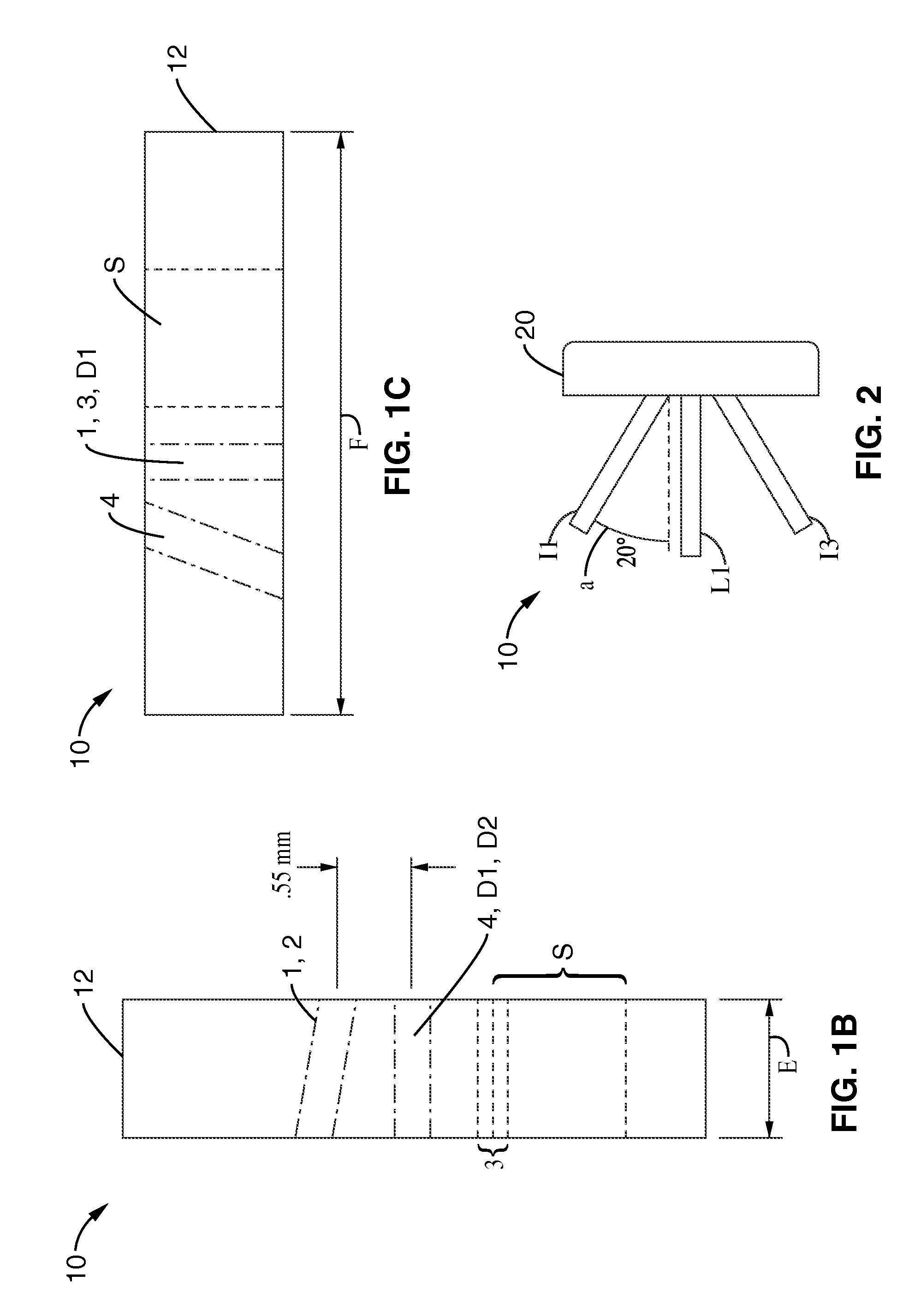Medical device system and related methods for diagnosing abnormal medical conditions based on in-vivo optical properties of tissue
a tissue optical and in-vivo technology, applied in the field of tissue abnormal diagnosis, can solve the problems of not providing real-time diagnostic information through pap smear or colposcopy-directed biopsy, and many limitations of currently acceptable screening and diagnostic strategies, so as to achieve accurate and repeatable detection of abnormalities
- Summary
- Abstract
- Description
- Claims
- Application Information
AI Technical Summary
Benefits of technology
Problems solved by technology
Method used
Image
Examples
example 1
[0146]FIGS. 10A-14 variously relate to an experimental study performed as an example hereunder related to certain aspects of the present disclosure as follows.
[0147]The objective of the present experiment was to examine the utility of in vivo elastic light scattering measurements to diagnose high grade squamous interepithelial lesions (HSIL) of the cervix. A newly developed fiber optic probe according to various aspects of the present disclosure was used to measure light transport in the cervical epithelium of 36 patients undergoing standard colposcopy. Both unpolarized and polarized light transport were measured in the visible and near-infrared. Spectroscopic results of 29 patients were compared with histopathology of the measured sites using receiver operating characteristic (ROC) curves, multiple analysis of variance (MANOVA) and logistic regression. In analysis, three spectroscopic parameters are statistically different for HSIL compared with low-grade lesions and normal tissue....
example 2
[0197]An additional experimental study was performed according to certain additional aspects of the present disclosure, under the present example as follows.
[0198]1. Overview
[0199]The objective of the present experiment was to examine the utility of in vivo elastic light scattering measurements according to certain aspects of the present disclosure to diagnose high grade squamous interepithelial lesions (HSIL) and cancers in colposcopically abnormal regions of the cervix.
[0200]A fiber optic probe was used to measure light transport in the cervical epithelium of patients undergoing standard colposcopy. Spectroscopic results of 151 patients were compared with histopathology of the measured and biopsied sites. A method of classifying the measured sites into two clinically relevant categories was developed and tested using five-fold cross-validation. The effects of patient characteristics (e.g. age) on the spectroscopically measured parameters were also determined and used in developing...
example 3
[0283]As noted elsewhere hereunder, while highly beneficial light scattering measurements have been observed to provide significant utility in diagnosing presence or absence of certain abnormal tissue conditions, such as for example HSIL, pressure variability at the probe tip is believed to contribute significant variability and unpredictability, and thus marginalizing the utility, of such techniques. Accordingly, the present embodiments provide for novel inclusion of a pressure sensor associated with the probe tip in order to remove or at least significantly reduce this variability.
[0284]More specifically, it has been observed that increased pressure by a probe tip onto a tissue bed to be examined results in artificially biasing certain signal parameters, and thus compromising diagnosis. In particular, monitored light scattering parameters related to hemoglobin in the tissue appear to be biased by pressure, with increasing pressure reducing the observed hemoglobin signal. It is bel...
PUM
 Login to View More
Login to View More Abstract
Description
Claims
Application Information
 Login to View More
Login to View More - R&D
- Intellectual Property
- Life Sciences
- Materials
- Tech Scout
- Unparalleled Data Quality
- Higher Quality Content
- 60% Fewer Hallucinations
Browse by: Latest US Patents, China's latest patents, Technical Efficacy Thesaurus, Application Domain, Technology Topic, Popular Technical Reports.
© 2025 PatSnap. All rights reserved.Legal|Privacy policy|Modern Slavery Act Transparency Statement|Sitemap|About US| Contact US: help@patsnap.com



